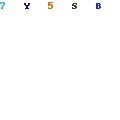This thread is spawned from the GI thread in the tech forum. I'm not quite sure what'll happen in it, but it's here to discuss stylised rendering, effects used now and before, effects that could be used in the future, etc.
As examples, I guess the most obvious is Okami on PS2, being totally unique and very effective.

Then you have the now quite common cartoon shading which can work very well. In DQVIII it does look very like a cartoon and I can't wait to see next-gen consoles render the same style but with buckets of AA and IQ enhancements.

From the tech thread, the idea of using a colourless Ambient Occlusion only renderer was suggested. Any thoughts on if that'll be possible next-gen (or this gen, I'm confused...) to some degree? Are the savings on pixel shading and texture requirements going to be applicable to AO rendering, or will they just represent unused capacity in the hardware.
And, um, what other examples are there, from previous games, or offline renders? Anyone got any favourite non-standard rendering techniques to share? I'll add a couple of offline styalized renders I produced years back to stir up ideas. These are 3D scenes that could be animated as such, and should be easily doable in a realtime game situation. The question is whether you'd want to or not! Thoughts please!


As examples, I guess the most obvious is Okami on PS2, being totally unique and very effective.

Then you have the now quite common cartoon shading which can work very well. In DQVIII it does look very like a cartoon and I can't wait to see next-gen consoles render the same style but with buckets of AA and IQ enhancements.

From the tech thread, the idea of using a colourless Ambient Occlusion only renderer was suggested. Any thoughts on if that'll be possible next-gen (or this gen, I'm confused...) to some degree? Are the savings on pixel shading and texture requirements going to be applicable to AO rendering, or will they just represent unused capacity in the hardware.
And, um, what other examples are there, from previous games, or offline renders? Anyone got any favourite non-standard rendering techniques to share? I'll add a couple of offline styalized renders I produced years back to stir up ideas. These are 3D scenes that could be animated as such, and should be easily doable in a realtime game situation. The question is whether you'd want to or not! Thoughts please!






